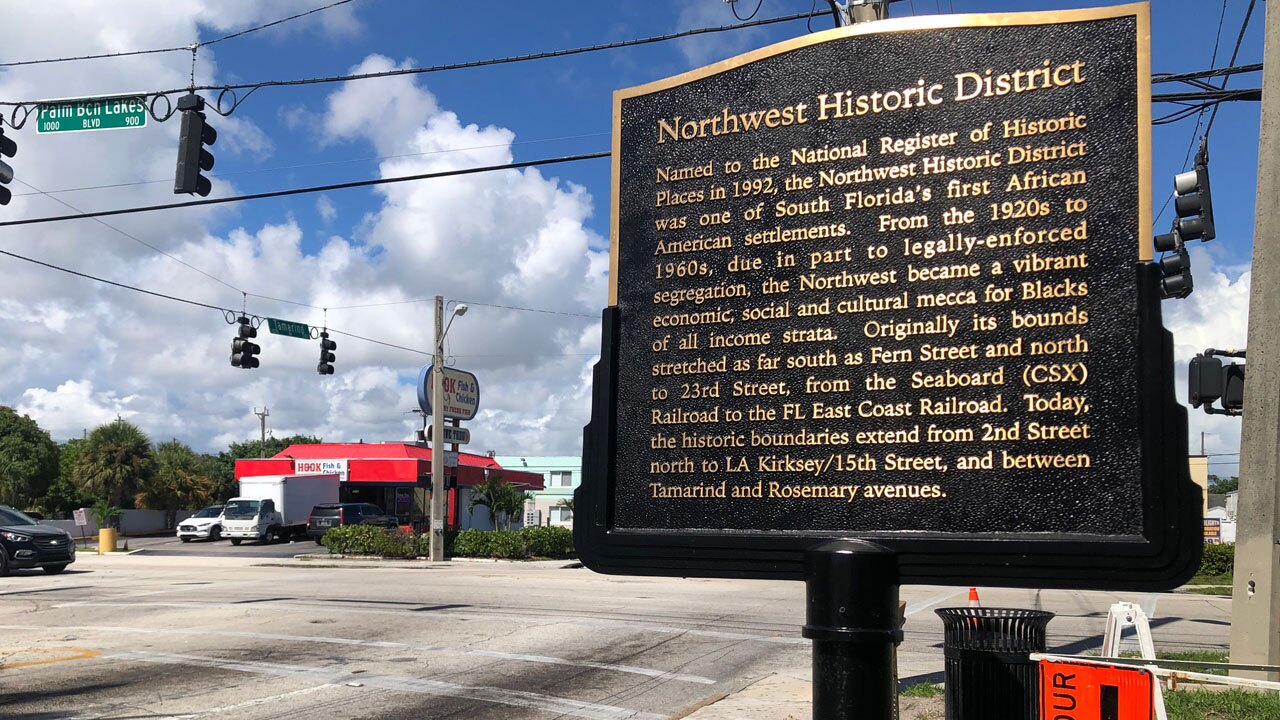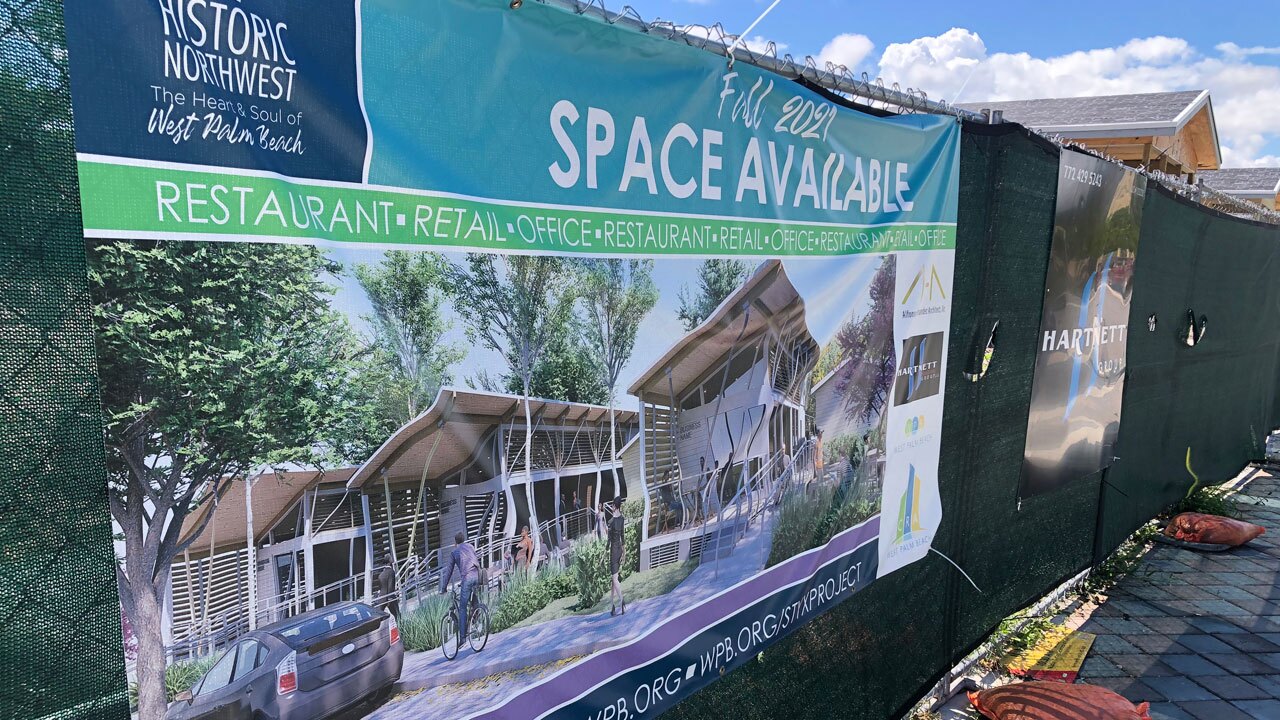WEST PALM BEACH, Fla. — Since 1947, the T. Leroy Jefferson Medical Society has worked to improve the health, wellness and career opportunities for the underserved communities of Palm Beach County.
Over the last year-and-a-half, the name is synonymous with the war on COVID-19 in both Black and Brown communities. But how much do you know about the man behind the society and mission?
Dr. Roger L. Duncan III is the 102nd Palm Beach County Medical Society president and a T. Leroy Jefferson Medical Society member.
"Every day we're doing something," Duncan said. "We're doing vaccinations and monoclonal antibody therapy."
And every day his colleagues within the T. Leroy Jefferson Medical Society are in the trenches juggling their own careers while also closing the racial gap in the vaccination rate.
"[We're] letting them know that we have their back. That we're culturally competent," Duncan said.
They're comprised of several hundred health care professionals who have worked collectively since 1947 and who also inspire the next generation across Palm Beach County.
"With or without a stethoscope, there are jobs in health care and in science, and we want all in the community to know about that," Duncan said.
The society runs a very tight schedule, but let's rewind to the early 1900s when the society was a team of one.
"He absolutely was," Duncan said.
Duncan is referring to Dr. Thomas Leroy Jefferson, the first Black physician in West Palm Beach who made house calls by bike, treating Black and Seminole Indian patients with a different set of communicable diseases in the news.
"Smallpox was still around, diphtheria, cholera — were diseases of cramped urban environments and those who had less privilege," Duncan said.
Urban environments had unequal access to health care and proper nutrition. But where were these areas located?

"Over there in the Styx where they had the domestic folks, where they were working for the people who lived on Palm Beach (Island)," he said.
WPTV went searching for the Styx in the county deed, the books and in person. The Historical Society of Palm Beach County has a site dedicated to the Styx community.
"Knowing our history is a great way not to repeat it," Duncan said.
From the early 1890s to about 1912, approximately 2,000 Blacks lived in an area known as the Styx.
The Palm Beach County Historical Society said it was where Palm Beach Island's Seaview Avenue is located today. There's no marker or symbol, but their contribution to the island is getting a resurgence of interest.
"(They) not only built the hotels — they serviced the hotels," said West Palm Beach Mayor Keith James.
Like the Royal Poinciana, what would become the world's largest resort hotel with three miles of corridors and roughly 2,000 guests, according to the Palm Beach County Historical Society.

"Those things have been kind of minimized and marginalized," Duncan said.
But that's just one contribution.
"It's hard to imagine Palm Beach County without that first Black labor force that was here. I can't say what it would be like today, but its existence would essentially be non," said Bryan K. Boysaw, Boysaw Law CEO, attorney and activist.
That Black labor force would later relocate to West Palm's Historic Northwest District.
Legally enforced segregation restricted blacks to boundaries between the Seaboard (CSX) Railroad to the Florida East Coast Railroad. Boysaw Law is located where one of the first Black pharmacists operated.
"In order to conduct a business, you had to be here in the Historic Northwest by this racially restrictive covenant and the City of West Palm Beach ordnance," he said.

Dr. T. Leroy Jefferson would open a medical office on North Olive Avenue and a drug store at the intersection of Rosemary Avenue and Clematis Street.
"He helped patients who suffered from rattlesnake bites to workers injuries — et cetera — to the best of his abilities," Duncan said. "He was a one-man show, making a difference for all of these people in West Palm Beach."
In recognition of the first Black pioneers, the City of West Palm Beach is soon to unveil The Styx Promenade, a mixed-use development coming to Seventh Street.
"West Palm Beach was the home to that service community, but there would not be a Palm Beach without the efforts of the residents of West Palm Beach, even back then," James said. "It's all very important. It's all essential to the history of our history, combined community — West Palm Beach and Palm Beach, and it's a story that has to be told continuously."

James, like Boysaw and Duncan, wants to see more history and cultural education incorporated into local tourism.
"I want something done on a significant scale that is notable," Boysaw said. "Something that people would not just have a tendency to drive by. If you drive, by you're definitely going to say, 'What is that? I want to stop and see that,'" he said.
It's history that gives respect to the people it's due and history revealed.
"To celebrate his great sacrifice and stick-to-itiveness and (Dr. T. Leroy Jefferson's) supreme desire to really help all within the community," Duncan said.
Click here to learn more about the T. Leroy Jefferson Medical Society.
Click here to learn more about the Styx and early West Palm Beach.




